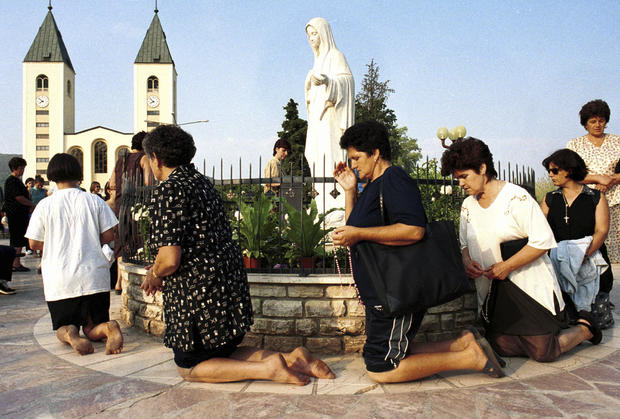Vatican updates norms to evaluate visions of Mary, weeping statues as it adapts to internet age and hoaxers
Vatican City – The Vatican's doctrinal office has released new norms regarding alleged supernatural phenomena such as apparitions of Mary, weeping statues and other supposed mystical events.
For centuries, apparitions of Mary at sites such as Fatima, Portugal and Lourdes, France – eventually declared by church authorities as having divine origin – have become the basis for shrines visited by millions of pilgrims each year.
But in a new document replacing the church's 1978 rules, the Dicastery for the Doctrine of the Faith (DDF) declared that the Vatican and the local bishop will no longer formally declare such phenomena to be of divine origin. DDF chief Cardinal Victor Manuel Fernandez said in a press conference on Friday introducing the new norms that the Vatican would no longer affirm "with moral certainty that (such phenomena) originates from a decision willed by God in a direct way." Instead, after careful analysis, they would limit themselves to authorizing devotion and pilgrimages, he said.
The new rules give the final word to the Vatican, requiring the bishop to conduct an investigation, formulate his judgment, and submit it to the DDF. The DDF will then respond with one of six possible outcomes. They range from a "nihil obstat" ("nothing stands in the way") allowing the bishop to promote the phenomena and invite devotion and pilgrimage; to proceeding with caution since some doctrinal questions are still open; to advising the bishop not to encourage the phenomena; to declaring based on concrete facts that the phenomena does not have divine origin.

Fernandez said that since examination of alleged religious phenomena took many years, these new rules would help the church reach decisions much more quickly, which is essential in the internet age where such claims spread very quickly.
In most cases, these apparitions have led to a growth in faith, leading to shrines that are at the heart of popular devotion, he said. But the cardinal also cautioned that they could lead to "serious issues that harm the faithful" and could be exploited for "profit, power, fame, social recognition, or other personal interest." The faithful could be "misled by an event that is attributed to a divine initiative but is merely the product of someone's imagination, desire for novelty, or tendency to lie," he said.
Neomi De Anda, executive director of the International Marian Research Institute at the University of Dayton, told the Associated Press the new guidelines represent a significant but welcome change to the current practice while restating important principles.
"The faithful are able to engage with these phenomena as members of the faithful in popular practices of religion, while not feeling the need to believe everything offered to them as supernatural as well as the caution against being deceived and beguiled," she said in an email.
- In:
- Vatican City
- Catholic Church
Disclaimer: The copyright of this article belongs to the original author. Reposting this article is solely for the purpose of information dissemination and does not constitute any investment advice. If there is any infringement, please contact us immediately. We will make corrections or deletions as necessary. Thank you.
Title:Vatican updates norms to evaluate visions of Mary, weeping statues as it adapts to internet age and hoaxers
Url:https://www.investsfocus.com







